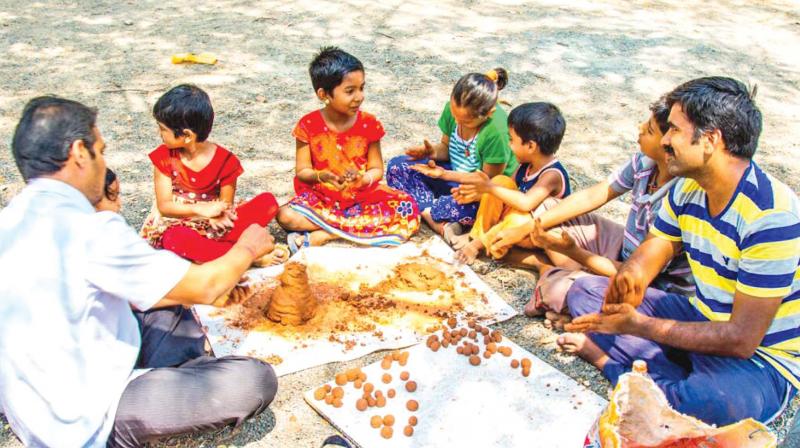Saplings or seed balls, debate continues

Chennai: To help increase the green cover in the city outskirts, the concept of seed balls may be becoming popular among nature lovers, but experts claim that these balls are more suitable for forest areas and not city landscapes. As the city's radius is increasing and green cover is losing its place in some parts of the city, many like-minded people and groups of nature lovers are coming forward to make seed balls.
Janakan P, a mechanical engineering student and seed ball maker said, "Seed balls need to be dried for a minimum of two hours in the sun. Saplings should be watered and monitored. They should be maintained properly, and also they would acclimatise to the local surroundings and would find it difficult if there is no rain or water. On the other hand, seed balls can grow almost anywhere and they sustain themselves adjusting to the environment. The advantage for seed balls is that they don't need fencing, monitoring, or even watering."
Shobha Menon, founder member, Nizhal NGO, said: "In urban areas particularly, plants need constant watering, fencing. Seeds grow only when there are proper nutrients. We are hoping that seed balls after thrown in a land, would grow, but they also need nutrients. Seed balls would better grow in forest regions. They can actually regenerate forest areas, not exactly urban areas". She added, "I don't believe in the idea of throwing seed balls into lands on the highway and expect them to grow".
Talking to DC, naturalist D Narasimhan, said, "Seed balls are more conducive to wild environments than in urban areas. The prospect of a seed ball can be identified well with herbaceous plants and shrubs. Seed balls are not suited for all trees." He added that throwing seed balls could have only a random success rate.
Seed balls, a concept that was introduced by a celebrated Japanese farmer, Masanobu Fukuoka, is an ancient form of planting seeds by not disturbing the land, not opening up the soil. Sand and compost (vermicompost or cow dung) is mixed with water to form a seed ball. Later, a seed is kept at the centre of the mixture and rolled into a ball.
Guava, papaya, custard apple (Seetha fruit), Jamun (Black plum) can be easily made into seed balls. These seed balls can be thrown into the agricultural fields to giving a welcoming sign to birds. Birds and insects do not disturb these seed balls as they are fully covered by sand and compost.

